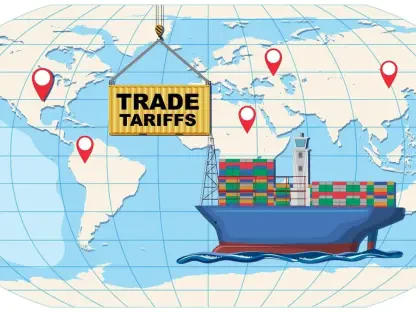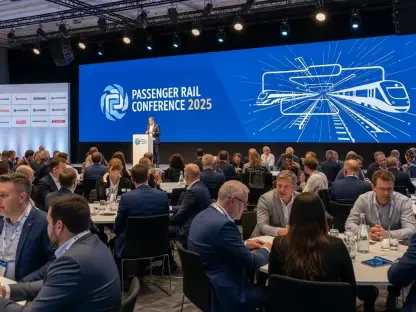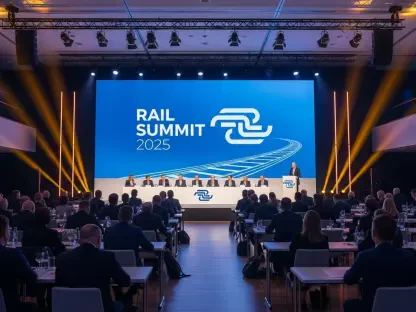Imagine a small business owner staring at a shipment invoice, costs skyrocketing due to unexpected tariffs on imported goods, with no clear resolution in sight, a scenario that has become a stark reality for many across the United States. As a heated legal battle over President Donald Trump’s sweeping tariff policies reaches the Supreme Court, the controversy, rooted in claims of executive overreach, has sparked intense debate among legal scholars, business leaders, and policymakers. This roundup gathers diverse perspectives on the ongoing dispute, exploring opinions on the legality of the tariffs, their economic impact, and the broader implications for trade policy. The goal is to provide a comprehensive view of the stakes involved as the nation awaits a landmark ruling.
Diverse Voices on the Legal Challenge
Legal Scholars Weigh In on Executive Power
A significant portion of the debate centers on whether the tariffs, imposed under the International Emergency Economic Powers Act, overstep constitutional boundaries by bypassing Congress’s authority over trade. Many legal experts argue that this move represents a dangerous precedent, undermining the checks and balances fundamental to the U.S. system. They point to lower court rulings, such as the decision by the Court of Appeals for the Federal Circuit earlier this year, which found the policy to be an unlawful extension of presidential power.
Others in the legal community, however, caution against overly restricting executive discretion in times of economic or security crises. Some scholars suggest that the President must retain flexibility to act swiftly in trade matters, especially when national interests are at stake. This perspective often highlights historical instances where emergency powers were critical to navigating complex international challenges, urging a balanced interpretation of the law.
The divide among legal minds underscores a broader tension: how much leeway should a president have in trade policy without legislative oversight? As the Supreme Court prepares for oral arguments in November, these contrasting views frame a pivotal question about the scope of executive authority that could reshape governance for years to come.
Business Leaders Highlight Economic Strain
Turning to the business sector, opinions are overwhelmingly critical of the tariffs’ immediate effects. Owners of small and medium-sized enterprises, particularly those reliant on imported materials, describe severe disruptions in their supply chains. Filings from a consolidated lawsuit involving five businesses and twelve states reveal widespread concern over price hikes that threaten their viability, with some reporting losses that could lead to layoffs or closures.
In contrast, a smaller faction of industry voices supports the tariffs as a necessary shield for domestic production. Certain manufacturing leaders argue that protecting American jobs and industries justifies short-term economic pain. They contend that without such measures, foreign competition could further erode key sectors, leaving the nation vulnerable in the long run.
This split in business sentiment reveals a critical fault line: while some see the tariffs as a lifeline for local economies, many more view them as a crippling burden. The Supreme Court’s upcoming decision will likely influence whether businesses adapt to ongoing uncertainty or push harder for policy reform.
Economic and Policy Perspectives
Economists Debate Market Stability
Economists bring another layer of insight, focusing on the tariffs’ broader impact on market dynamics. Many warn that sustained uncertainty surrounding the policy could destabilize trade relations, driving up costs for consumers and businesses alike. Data cited in recent analyses points to significant disruptions, with some predicting long-term damage to the U.S. position in global markets if the legal limbo persists.
On the flip side, a minority of economic analysts argue that the tariffs serve as a bargaining chip in international negotiations, potentially strengthening the nation’s leverage. They suggest that temporary economic friction might yield strategic advantages, such as securing better trade deals or curbing reliance on foreign goods. This view, though less common, emphasizes a calculated risk over immediate stability.
The disagreement among economists highlights a fundamental question of trade-offs. Should the focus be on shielding domestic interests at the cost of market turbulence, or on preserving economic harmony through open trade? The resolution of this case may provide clarity on which approach gains judicial backing.
Policymakers Push for Clarity and Reform
Policymakers from various states and federal levels also offer differing takes on the tariff saga. Many state officials, especially from regions hit hardest by cost increases, advocate for stricter legislative oversight of trade decisions. They argue that Congress must reclaim its role in setting tariffs to prevent similar disputes, emphasizing the need for clear guidelines to protect constituents from sudden policy shifts.
Conversely, some federal policymakers defend the administration’s stance, framing the tariffs as an essential tool for addressing economic and security threats. They caution that curbing presidential authority too severely could hamper the government’s ability to respond to crises, potentially weakening national defense in trade matters. This perspective often ties the policy to broader geopolitical strategies.
The clash in policy circles reflects a deeper struggle over how trade decisions should be governed. With the Supreme Court’s ruling looming, these opinions signal a critical moment for defining the balance between executive action and legislative control, potentially influencing future frameworks for years ahead.
Closing Thoughts on a Defining Moment
Looking back, the discourse surrounding Trump’s tariff legality captured a nation grappling with the boundaries of power and the realities of economic hardship. The roundup of perspectives—from legal scholars questioning constitutional limits to business leaders lamenting financial strain, and from economists warning of market risks to policymakers seeking structural change—revealed a multifaceted challenge with no easy answers. Each viewpoint added depth to the understanding of a policy that touched countless lives and industries.
Moving forward, stakeholders must prepare for various outcomes by diversifying supply chains, advocating for legislative clarity, or engaging in broader trade reform discussions. Businesses might consider contingency plans to mitigate tariff-related costs, while policymakers could prioritize bipartisan efforts to establish robust oversight mechanisms. As the legal dust settles, staying informed and proactive will be key to navigating the evolving landscape of American trade policy, ensuring that both national interests and individual livelihoods find a sustainable path ahead.









